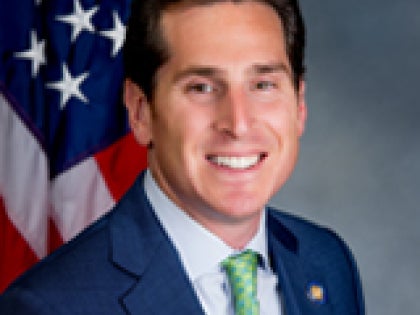
LIRR-related Sandy repair, resiliency efforts still years from completion
The chairman of the MTA said his agency has “spent wisely” billions of dollars to repair and fortify the region’s public transportation system in the years since Sandy, but several efforts to repair infrastructure used by hundreds of thousands of Long Island commuters daily are far from complete.
Key among those projects is the long-anticipated repair of the East River Tunnels, which were inundated with 14 million gallons of corrosive saltwater during the Oct. 29, 2012, storm. Amtrak, which owns the tunnels used primarily by the Long Island Rail Road, said this month it doesn’t expect to have the project’s design phase completed until February 2021.
The project is not expected to begin until after the Metropolitan Transportation Authority completes its East Side Access project in late 2022. That project would create the extra capacity necessary to take the two damaged East River Tunnels out of service for repairs.
“We are working with the MTA to develop a timeline, including a start date,” Amtrak spokesman Jason Abrams said. “The project budget and timeline will be provided as the design progresses in 2020.”
Other LIRR-related Sandy repair and resiliency efforts are similarly years from completion. They include a plan to build a flood wall around the perimeter of a Long Island City Rail Yard. Originally scheduled to be completed by December 2017, the project is now not expected to begin until January 2020.
Another effort to replace switch machines, signal components, third rail components, fire alarm systems and switch heaters at the LIRR’s West Side Yard near Penn Station is running more than 2 1/2 years late, and is not expected to be finished until September 2022 — just shy of Sandy’s 10-year anniversary.
Still, MTA chairman Patrick Foye defended the progress made by the authority since the storm and said “resiliency is part of every project” the MTA has taken on since Sandy.
“I think we spent wisely billions of dollars that the federal government gave us,” Foye said. “We’re proud of the work that’s been done. I don’t think anybody can guarantee that, in the event of a superstorm Sandy or something that’s one-and-a-half or two times that, that there’s not going to be a disruption to the entire economy, region and perhaps nation.”
Although some projects have lagged, much of the work taken on by the LIRR to repair and harden its infrastructure post-Sandy has been completed. Those efforts have been concentrated on the LIRR's low-lying Long Beach line, where the railroad has, in recent years, rebuilt and elevated three electrical substations, rehabilitated the Wreck Lead Bridge connecting Long Beach and Island Park, and restored damaged signal components.
The LIRR is spending $120 million “to repair and protect the Long Beach Branch, which was devastated by Superstorm Sandy in 2012,” the MTA said in a statement last month.
Long Beach commuter Norah Egan said she wasn’t aware the LIRR had done all the work on the branch, which was out of service for several weeks after Sandy.
“If they did, I certainly haven’t noticed,” said Egan, who has “zero confidence” that the railroad is prepared to handle another major weather event.
“They can’t even handle a minor snow or windstorm,” Egan said.
Sen. Todd Kaminsky, who lives in Long Beach, said that while he believes the LIRR is “better equipped” to withstand severe weather, he also has concerns about the railroad’s track record since Sandy.
“So much of this is about management . . . And the railroad still really needs to prove itself. We will have a windstorm, a heavy rain incident, or snow, and things don’t run well. So what would happen in a catastrophic flooding event? I certainly think it would be a tremendous test for the railroad,” said Kaminsky, who expressed particular concern over the state of the East River Tunnels. “We’re definitely better than we used to be. We still could be doing more. And, at the end of the day, those tunnels are really everything. And we can’t take our eye off them.”
